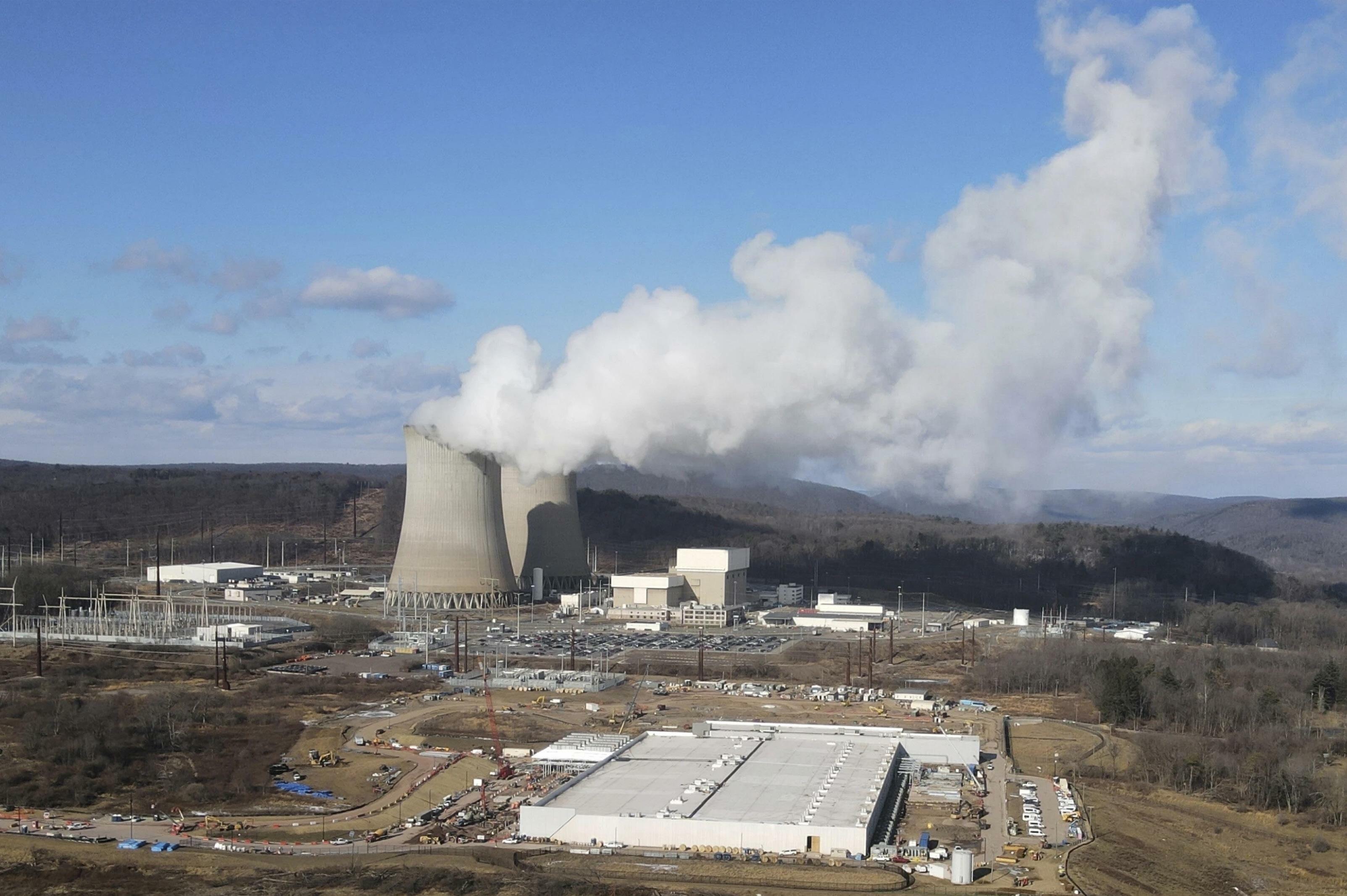Front and center is the data center that Amazon’s cloud computing subsidiary, Amazon Web Services, is building next to the Susquehanna nuclear plant in eastern Pennsylvania.
The arrangement between the plant’s owners and AWS — called a “behind the meter” connection — is the first such to come before the Federal Energy Regulatory Commission. For now, FERC has rejected a deal that could eventually send 960 megawatts — about 40% of the plant’s capacity — to the data center. That’s enough to power more than a half-million homes.
That leaves the deal and others that likely would follow in limbo. It’s not clear when FERC, which blocked the deal on a procedural ground, will take up the matter again or how the change in presidential administrations might affect things.
“The companies, they’re very frustrated because they have a business opportunity now that’s really big,” said Bill Green, the director of the MIT Energy Initiative. “And if they’re delayed five years in the queue, for example - I don't know if it would be five years, but years anyway — they might completely miss the business opportunity!"
image [https://cdn.magzter.com/1400077361/1738183232/articles/_RRd7eQMi1738234783078/_l_oYI76w1738235122168.jpg]
WHAT'S DRIVING DEMAND FOR ENERGY-HUNGRY DATA CENTERS
The rapid growth of cloud computing and artificial intelligence has fueled demand for data centers that need power to run servers, storage systems, networking equipment and cooling systems.
That’s spurred proposals to bring nuclear power plants out of retirement, develop small modular nuclear reactors and build utility-scale renewable installations or new natural gas plants. In December, California-based Oklo announced an agreement to provide 12 gigawatts to data center developer Switch from small nuclear reactors powered by nuclear waste.
Federal officials say fast development of data centers is vital to the economy and national security, including to keep pace with China in the artificial intelligence race.
For AWS, the deal with Susquehanna satisfies its need for reliable power that meets its internal requirements for sources that don’t emit planet-warming greenhouse gases, like coal, oil or gas-fueled plants.
Big Tech also wants to stand up their centers fast. But tech’s voracious appetite for energy comes at a time when the power supply is already strained by efforts to shift away from planet-warming fossil fuels.
They can build data centers in a couple years, said Aaron Tinjum of the Data Center Coalition. But in some areas, getting connected to the congested electricity grid can take four years, and sometimes much more, he said.
Plugging directly into a power plant would take years off their development timelines.
image [https://cdn.magzter.com/1400077361/1738183232/articles/_RRd7eQMi1738234783078/vIt2yvwoZ1738235144014.jpg]
WHAT’S IN IT FOR POWER PROVIDERS
In theory, the AWS deal would let Susquehanna sell power for more than they get by selling into the grid. Talen Energy, Susquehanna’s majority owner, projected the deal would bring as much as $140 million in electricity sales in 2028, though it didn’t disclose exactly how much AWS will pay for the power.
The profit potential is one that other nuclear plant operators, in particular, are embracing after years of financial distress and frustration with how they are paid in the broader electricity markets. Many say they have been forced to compete in some markets against a flood of cheap natural gas as well as state-subsidized solar and wind energy.
Power plant owners also say the arrangement benefits the wider public, by bypassing the costly buildout of long power lines...


